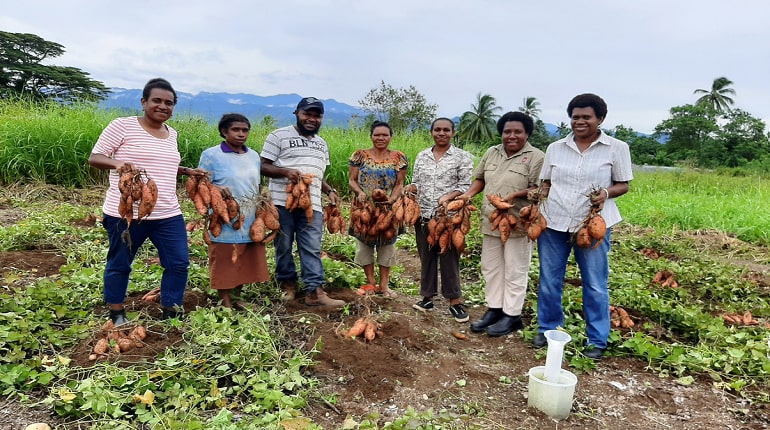Researchers from NARI and the PNG University of Technology are investigating ways to control weevils in sweetpotato apart from chemicals use.
This collective research is part of a project supported by the Australian Centre for International Agricultural Research (ACIAR) “Developing improved crop protection options in support of intensification of sweetpotato production in Papua New Guinea”.
Researchers set up trials to test the effectiveness of a naturally occurring insect-killing fungus called Metarhizium to reduce damage caused by the Sweetpotato Weevil (Cylas formicarius) and West Indian Sweetpotato Weevil (Euscepes postfasciatus) at two farming sites in Morobe province.
The trial sites were established in Poahom village within the Situm area of Nabak Local Level government and at the Agriculture Farm in the UNITECH Taraka Campus.
The insect-killing fungus was extracted from soil samples collected from commercial sweetpotato production sites in the highlands and lowlands. The orange-flesh sweetpotato (Beauregard) used in the trials is virus free (pathogen tested).
To make enough fungi for the trials fungus was grown on rice grains which serves as a food source. This was per-formed at the UNITECH Biotechnology Laboratory.
The fungus was applied around the sweetpotato mounds after planting sweetpotato vines and covered with soil
The Metarhizium fungus will kill its host (weevil) once it comes into contact with it by exhausting its body fluids then grows out into a fungal thread on the corpse to search for other arthropods (invertebrates such as insects, spiders or crabs, lobsters etc).
Laboratory experiments from the UNITECH Biotechnology Centre indicate that the fungus is able to kill its host, the sweetpotato weevils, within 10 to 15 days.
The fungus is has been used with over 200 species of insects and arthropods globally as a biological control.
The use of such biological controls is good for the environment and humans.
This soil-inhabiting fungus is widely present in the soil around the country and can become a potential biological control agent to control pests in an integrated pest management pro-gram.
Further studies will be carried out on the fungus to understand how effective in can become as a potential pest management option.
Other components such as crop rotation, sanitation, the use of pathogen-tested planting mate-rials and deployment of weevil pheromone lures are crucial for the success of commercial sweetpotato production.




